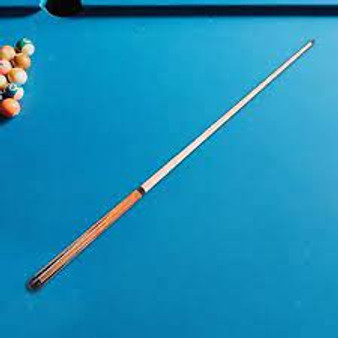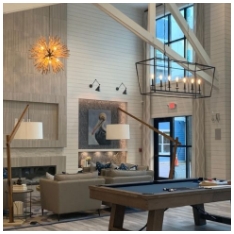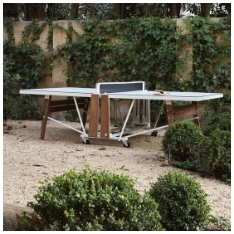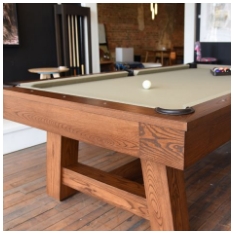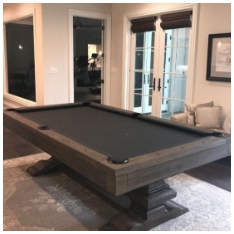Cue sticks are the heart of every billiards or pool game. Whether you play casually at home, compete in local leagues, or participate in professional tournaments, your cue stick directly influences your performance. Over time, even the best cue sticks experience wear and tear. This leads many players to ask the common The answer depends on several factors, including how often you play, how well you maintain your cue, and your performance expectations. In this article, we will explore signs of when it’s time to replace your cue, how to properly care for it, and tips to extend its lifespan.
Understanding Cue Stick Lifespan
Unlike disposable sports equipment, cue sticks can last for many years if properly maintained. A well-crafted cue, made from quality hardwoods and cared for correctly, can serve players for decades. However, this doesn’t mean that you’ll never need to replace it.
The lifespan of a cue stick depends on several key elements:
- Frequency of Use – Casual players may use the same cue for years, while frequent or professional players may notice wear within months.
- Quality of Construction – Higher-quality cues resist warping, splitting, and tip damage better than budget cues.
- Storage Conditions – Cues stored in humid or very dry environments often suffer from warping.
- Maintenance Habits – Regular cleaning, tip replacement, and ferrule inspection extend a cue’s lifespan significantly.
Signs It’s Time to Replace Your Cue Stick
The best way to answer how often should you replace your cue stick is to pay attention to its condition. Here are some common indicators that it might be time for a replacement:
1. Warping
One of the most obvious signs is when your cue no longer stays straight. A warped cue affects accuracy, especially when applying spin. To test this, roll your cue on a flat surface. If it wobbles, replacement should be considered.
2. Loose or Damaged Joints
Cues with joints that don’t connect firmly can affect power transfer. If tightening or repairing doesn’t solve the issue, it may be time to upgrade.
3. Cracks or Splinters in the Shaft
Small cracks may be repairable, but larger damage can compromise the integrity of the cue. This is both a performance and safety issue.
4. Excessive Tip Wear
Cue tips wear down naturally, and replacing them is part of regular maintenance. However, if the ferrule or shaft near the tip is damaged repeatedly, a new cue might be necessary.
5. Decline in Performance
If you notice your game consistency dropping, and it’s not due to skill level, your cue may not be delivering the precision you need.

How Long Does the Average Cue Stick Last?
On average, a well-maintained cue stick can last anywhere from 5 to 20 years, depending on usage. Casual players who enjoy a game once or twice a week may only need to replace their cue every decade. On the other hand, competitive players might choose to upgrade every few years to ensure peak performance.
Still, there isn’t a fixed timeline. The real answer to “How often should you replace your cue stick?” is based on usage, care, and performance goals rather than the passage of time.
Cue Stick Maintenance Tips to Extend Its Life
If you want to keep your cue stick in good condition for longer, proper maintenance is essential. Here are practical tips:
- Store Properly
Always keep your cue in a protective case and store it upright in a temperature-controlled environment. Avoid leaving it in a hot car or damp basement.
- Clean the Shaft Regularly
Use a cue shaft cleaner or a slightly damp cloth to remove dirt, chalk buildup, and oils from your hands. A smooth shaft improves control and prevents long-term damage.
- Replace Tips on Time
Tips usually wear out faster than the cue itself. Regularly check for flatness or mushrooming and replace when necessary.
- Avoid Excessive Chalk Dust
Too much chalk dust can settle into the wood and degrade the finish. Wipe your cue after long sessions.
- Inspect Joints and Ferrules
Keep joints tight and check ferrules for cracks. Small issues fixed early prevent larger replacements later.
Should You Repair or Replace Your Cue Stick?
Many players wonder whether repairing their cue is enough or if replacement is the better choice. The answer depends on the severity of the damage.
- Repairable Issues – Tip replacement, ferrule cracks, or loose wraps are affordable and worthwhile fixes.
- Non-Repairable Issues – Severe warping, deep cracks, or broken joints often mean it’s time for a replacement.
If the cost of repair is nearly equal to buying a new cue, upgrading is usually the smarter decision.

How Often Professional Players Replace Their Cues
Professional and semi-professional players often replace their cues more frequently than casual players. While many maintain a primary cue for years, they may switch to a new one every few seasons to match evolving playing styles or preferences.
Additionally, professionals often own multiple cues: one for breaking, one for regular play, and sometimes a backup. Their replacement cycles are influenced not only by wear and tear but also by performance standards.
Choosing the Right Replacement Cue
When it comes time to replace your cue, consider the following:
- Weight and Balance – Select a cue that feels comfortable and balanced in your hand.
- Shaft Material – Maple is common, but carbon fiber shafts are gaining popularity for durability and low maintenance.
- Joint Type – Stainless steel, wood-to-wood, or quick-release joints affect how the cue transfers power.
- Budget vs. Quality – While affordable cues are fine for casual players, investing in a mid-range or high-quality cue is worthwhile for regular use.
Final Thoughts
There is no one-size-fits-all answer to how often should you replace your cue stick. For most casual players, a single cue can last many years with proper care. Competitive players, however, may find themselves replacing or upgrading more frequently.
The key is to monitor your cue for signs of wear, maintain it regularly, and make the decision to replace it when it no longer delivers the precision and control you expect. By doing so, you’ll always ensure that your equipment matches your skill level and supports your best game.
